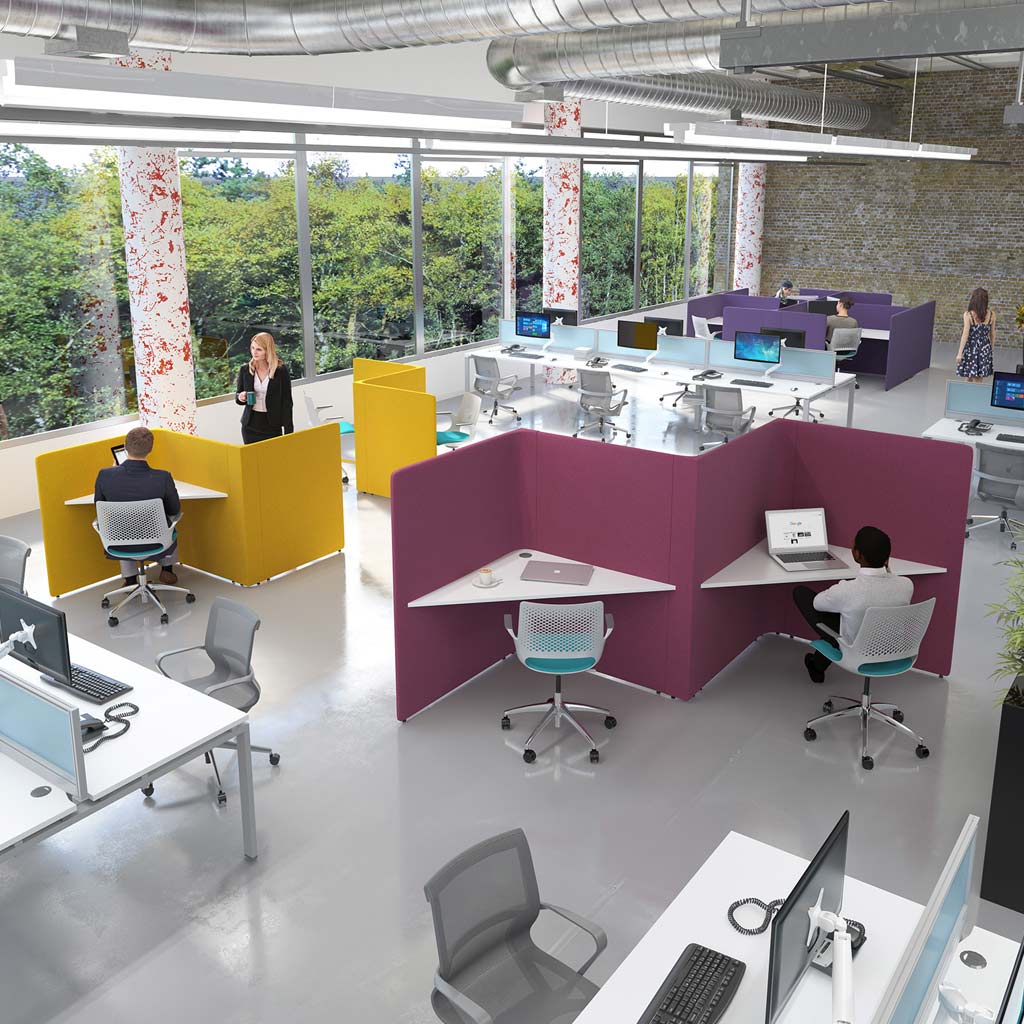
An All-Inclusive Office Design
Each employee has a unique set of needs, many of which are not always apparent. And businesses are now challenged with creating a post-pandemic work environment that is all-inclusive for a diverse range of employees.
Companies that are committed to competing in today’s dynamic marketplace focus on building a culture that includes engagement, productivity, and collaboration. More and more workplaces are gravitating towards flexible and creative designs, and this is what an all-inclusive office design is all about.
Inclusion in the workforce is a hot topic right now that goes beyond hiring a diverse team. In the last twenty years, there’s been a significant shift in legal and moral policy to encourage companies to recruit employees that were often overlooked or excluded despite having the skills and qualifications to perform the job. But today’s office designs have to go beyond the typical focus on physical differences alone; rather there has to be an equal emphasis on different styles of working as well as on mental health.
Features of inclusive office design
Inclusive office design is about accommodating choice, flexibility and practicality – a work environment that benefits everyone. It is, of course, impossible to design an office to suit every individual’s personalities and needs; it’s more about offering choices to people. Just as importantly, the layout and look should engage employees and inspire them. A change of scenery, as they say, is as good as a rest!
Open plan offices have been designed to help to boost collaboration, build relationships and save on costs. But most open plan offices do not accommodate the needs of every employee. Therefore it’s important to cater to individual needs and provide a flexible layout with different types of workstations to meet employee’s unique working styles. The abundance of distracting noises in a typical open plan office environment can also cause stress, frustration and animosity.
A modern office layout that encompasses private workspaces and collaborative areas, alongside breakout spaces can support how people work through freedom of choice, encouraging organic interaction and promoting movement. With a growing focus on health and wellbeing in office settings, biophilic designs are also growing in popularity, adding some plants and nature into the office to make people feel more relaxed and peaceful.
How to design workplaces for inclusivity
The aim is to use furniture to create workspaces that are easily adaptable. Height adjustable desks such as the Dams Elev8² sit-stand range are a great option, as they can be easily changed to accommodate all needs. 80% of adults suffer from lower back pain at some point in their lives. Constant sitting has also shown to increase the risk of heart disease, diabetes, depression and obesity, so providing small conveniences in the workplace can decrease that number.
For employees that get stressed out because they can’t concentrate with the noise around them, private acoustic hubs, telephone booths and meeting pods can also help to keep noise levels down and concentration levels up. Silen acoustic hubs from Dams are standalone pods which essentially create a room within a room and are ideal for small meetings, brainstorming and informal one-to-one sessions. It’s also possible to equip the hubs with features that are useful for meetings such as whiteboards, power and TV screens, together with LED lighting and air circulation units as standard to make sessions comfortable for users.
Offices are not just places of work; they’re places for interaction, engagement, and bonding. Other furniture solutions to improve health and wellbeing include communal breakout areas that encourage employees to take a break from their work, move around the office, and encourage cross-functional interactions.
A post-pandemic all-inclusive office
The importance of an all-inclusive design in the workplace has intensified in recent months due in part to the flexibility people have enjoyed working remotely during Covid-19. Now that lockdown restrictions have eased, employers are contemplating how to accommodate the flexible, post-pandemic needs of their vastly more privileged office workers and about how to entice people to return.
The wellbeing of employees in the workplace is becoming more vital, and office furniture can play a huge part in helping to keep people happy and healthy when they’re working.
Some people want full-time office life back, some want full-time home working, and most would probably prefer something
in between. But whichever category people fall into, one thing is for certain, to get the most out of a post-pandemic diverse workforce and keep everybody happy, companies need to create a work environment where people want to spend their time.
An inclusive office design nurtures a solid company culture, improves engagement and enhances job satisfaction. It helps people personalise their workplaces, feel a sense of belonging and feel comfortable, thereby reducing everyday frustration and effort, and hence increasing mental wellbeing and productivity. Implementing and maintaining an all-inclusive culture becomes far easier when that inclusivity is built into the very fabric of the workplace design.
Super Deduction Tax Relief
From 1 April 2021 until 31 March 2023, companies investing in qualifying new plant and machinery assets will benefit from a 130% first-year capital allowance.
Furniture and office refurbishments will count as qualifying expenditure for this scheme.
This means for every £1 you spend, you save 25p on tax.
If your workplace is in need of a post-pandemic refresh, contact us today to discuss how we can meet your needs.
